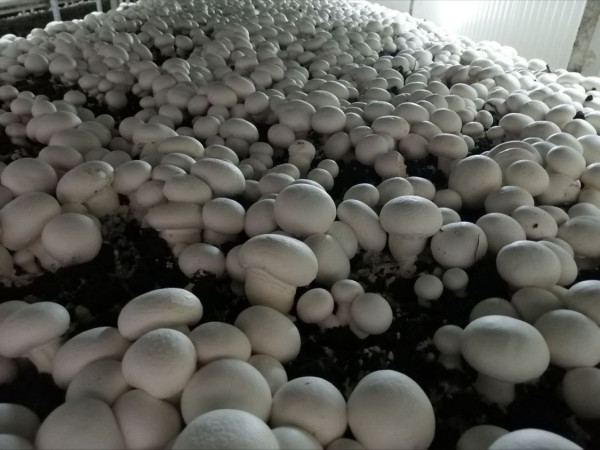왜 방제가 필요한가?
본문
Controlling diseases and pests plays an
important role in high quality production and reducing production costs. The first step to control diseases and pests is to identify them. Correct and timely diagnosis gives us the opportunity to avoid big losses before it is too late. Factors that reduce production and quality include: diseases, pests and physiological disorders and unexpected events.
In the current situation where the science of mushroom production has expanded, paying attention to details and reducing production costs can keep a producer in the competitive course. Undoubtedly, one of the methods is to prevent factors that reduce production and quality. And this is an art that growers should know.
Pests and diseases can cause considerable damage to mushroom crops, leading to yield losses and reduced quality of the final product. Integrated Pest Management (IPM) strategies are essential for minimizing the use of chemical pesticides, thereby reducing production costs and environmental impacts. Furthermore, effective disease management practices, such as sanitation, proper hygiene, are critical for preventing the spread of pathogens and maintaining a healthy mushroom growing environment. Investing in pest and disease control measures not only ensures higher yields and better quality mushrooms but also contributes to sustainable and economically viable mushroom production systems.
번역
질병 및 해충 방제는
고품질 생산 및 생산 비용 절감에 중요한 역할. 질병과 해충을 통제하는 첫 번째 단계는 질병과 해충을 식별하는 것입니다. 정확하고 시기 적절한 진단은 너무 늦기 전에 큰 손실을 피할 수 있는 기회를 제공합니다. 생산과 품질을 저하시키는 요인에는 질병, 해충 및 생리적 장애 및 예기치 않은 사건이 포함됩니다.
버섯 생산의 과학이 확대된 현재 상황에서 세부 사항에 주의를 기울이고 생산 비용을 줄이면 생산자가 경쟁력 있는 과정을 유지할 수 있습니다. 의심할 여지 없이 방법 중 하나는 생산과 품질을 저하시키는 요인을 방지하는 것입니다. 그리고 이것은 재배자가 알아야 할 예술입니다.
해충과 질병은 버섯 작물에 상당한 피해를 줄 수 있으며, 수확량 손실과 최종 제품의 품질 저하로 이어질 수 있습니다. 통합 해충 관리(IPM) 전략은 화학 살충제의 사용을 최소화하여 생산 비용과 환경 영향을 줄이는 데 필수적입니다. 또한 위생, 적절한 위생과 같은 효과적인 질병 관리 관행은 병원균의 확산을 방지하고 건강한 버섯 재배 환경을 유지하는 데 중요합니다. 해충 및 질병 방제 조치에 대한 투자는 더 높은 수확량과 더 나은 품질의 버섯을 보장할 뿐만 아니라 지속 가능하고 경제적으로 실행 가능한 버섯 생산 시스템에 기여합니다.
important role in high quality production and reducing production costs. The first step to control diseases and pests is to identify them. Correct and timely diagnosis gives us the opportunity to avoid big losses before it is too late. Factors that reduce production and quality include: diseases, pests and physiological disorders and unexpected events.
In the current situation where the science of mushroom production has expanded, paying attention to details and reducing production costs can keep a producer in the competitive course. Undoubtedly, one of the methods is to prevent factors that reduce production and quality. And this is an art that growers should know.
Pests and diseases can cause considerable damage to mushroom crops, leading to yield losses and reduced quality of the final product. Integrated Pest Management (IPM) strategies are essential for minimizing the use of chemical pesticides, thereby reducing production costs and environmental impacts. Furthermore, effective disease management practices, such as sanitation, proper hygiene, are critical for preventing the spread of pathogens and maintaining a healthy mushroom growing environment. Investing in pest and disease control measures not only ensures higher yields and better quality mushrooms but also contributes to sustainable and economically viable mushroom production systems.
번역
질병 및 해충 방제는
고품질 생산 및 생산 비용 절감에 중요한 역할. 질병과 해충을 통제하는 첫 번째 단계는 질병과 해충을 식별하는 것입니다. 정확하고 시기 적절한 진단은 너무 늦기 전에 큰 손실을 피할 수 있는 기회를 제공합니다. 생산과 품질을 저하시키는 요인에는 질병, 해충 및 생리적 장애 및 예기치 않은 사건이 포함됩니다.
버섯 생산의 과학이 확대된 현재 상황에서 세부 사항에 주의를 기울이고 생산 비용을 줄이면 생산자가 경쟁력 있는 과정을 유지할 수 있습니다. 의심할 여지 없이 방법 중 하나는 생산과 품질을 저하시키는 요인을 방지하는 것입니다. 그리고 이것은 재배자가 알아야 할 예술입니다.
해충과 질병은 버섯 작물에 상당한 피해를 줄 수 있으며, 수확량 손실과 최종 제품의 품질 저하로 이어질 수 있습니다. 통합 해충 관리(IPM) 전략은 화학 살충제의 사용을 최소화하여 생산 비용과 환경 영향을 줄이는 데 필수적입니다. 또한 위생, 적절한 위생과 같은 효과적인 질병 관리 관행은 병원균의 확산을 방지하고 건강한 버섯 재배 환경을 유지하는 데 중요합니다. 해충 및 질병 방제 조치에 대한 투자는 더 높은 수확량과 더 나은 품질의 버섯을 보장할 뿐만 아니라 지속 가능하고 경제적으로 실행 가능한 버섯 생산 시스템에 기여합니다.
